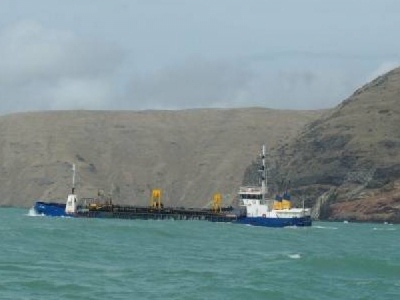
Posted on August 8, 2017
By Chris Hutching, stuff
The Surfbreak Protection Society is appealing against Lyttelton Port of Christchurch’s dredging resource consents because it says the company failed to adequately measure existing baseline conditions.
The port company said the appeal, along with Ng?i Tahu’s, would delay cruise ship visits because some dredging would be required around a new proposed berth area.
Surfbreak’s appeal relates exclusively to the effects on the surf breaks and beaches of Christchurch.
There are several surf schools in Christchurch charging about $80 for a first lesson and progressively less for subsequent lessons.
The consents granted recently allow Lyttelton Port to dump 18 million cubic metres of sediment 2.25 kilometres off Godley Head about 5kms fromTaylors Mistake, Sumner Bar, Sumner and New Brighton.
“How can you tell in the future if the surf breaks have been affected if there is no science to measure what you already have?” Surfbreak spokesman Mike Gunson said.
“This material could migrate shoreward from the disposal sites over time, and in toward Taylors Mistake and Sumner as a first port of call.”
Taylors Mistake was significant to the local surfing community with its higher performance wave, and there could be effects on the the way sand was deposited at the entrance to the Heathcote/Avon estuary.
“Cumulative effects on the surf breaks have been experienced at Mount Maunganui and Bay of Plenty, where maintenance dredge disposal resulted in the beach becoming over-filled with material and surfing wave quality decreasing.”
Gunson contrasted Lyttelton Port’s approach with Port Otago, which he said operated a robust adaptive management plan for the surf breaks of Aramoana and Whareakeake.
Surfbreak resolved a successful plan in 2013 through an Environment Court mediated settlement with Port Otago, he said.
The society seemed locked into repeating the same court process with Port Lyttelton, Port Napier, and Port of Gisborne as they competed for larger ship visits.
“With all that said, it is entirely feasible that Lyttelton Port and Surfbreak can reach a mutually beneficial outcome for all concerned,” Gunson said.
During the recent hearings before an Environment Canterbury resource consent panel, Ng?i Tahu’s expert witnesses were also sceptical of Lyttelton’s conclusion that New Zealand’s largest-ever dredging project would have no effects.
“This contrasts with effects recognised by all stakeholders for both the Port Tauranga Port and Port of Otago dredging projects,” according to Ng?i Tahu evidence at the hearing.
Ng?i Tahu witnesses disagreed with Lyttelton Port’s approach of monitoring to detect any problems and said models should focus on predicting potential problems.
Ng?i Tahu expert witness Wayne Stephenson said the plume of sediment created by dredging had potential to disperse far more widely than indicated in any of the reports presented as part of the consent application because local wind and waves had not been included in the modelling.
“It is not clear if resuspended sediment will be transported back on shore, into Lyttelton Harbour or other embayments along the north east coast of Banks Peninsula.”
Stephenson told the resource consent panel members the consent should be clearer about what the trigger for managing any adverse environmental effects should be.
Port of Tauranga had also been required to pay a $1 million environmental bond to Bay of Plenty Regional Council to remedy any unforeseen effects on the environment.
Source: stuff





